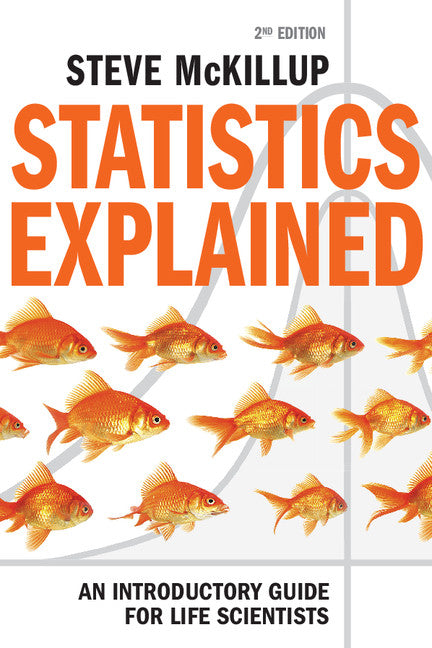Freshly Printed - allow 8 days lead
Couldn't load pickup availability
Statistics Explained
An Introductory Guide for Life Scientists
This book provides straightforward conceptual explanations of statistical methods for the life sciences, specially designed for students lacking a strong mathematical background.
Steve McKillup (Author)
9780521183284, Cambridge University Press
Paperback, published 3 November 2011
416 pages, 199 b/w illus. 102 tables 51 exercises
22.8 x 15.2 x 1.9 cm, 0.66 kg
'Most exciting perhaps are the topics covered that are not often discussed in introductory textbooks … I have no doubt that Statistics Explained will find a large and appreciative audience among undergraduate biology majors.' The Quarterly Review of Biology
An understanding of statistics and experimental design is essential for life science studies, but many students lack a mathematical background and some even dread taking an introductory statistics course. Using a refreshingly clear and encouraging reader-friendly approach, this book helps students understand how to choose, carry out, interpret and report the results of complex statistical analyses, critically evaluate the design of experiments and proceed to more advanced material. Taking a straightforward conceptual approach, it is specifically designed to foster understanding, demystify difficult concepts and encourage the unsure. Even complex topics are explained clearly, using a pictorial approach with a minimum of formulae and terminology. Examples of tests included throughout are kept simple by using small data sets. In addition, end-of-chapter exercises, new to this edition, allow self-testing. Handy diagnostic tables help students choose the right test for their work and remain a useful refresher tool for postgraduates.
Preface
1. Introduction
2. Doing science: hypotheses, experiments and disproof
3. Collecting and displaying data
4. Introductory concepts of experimental design
5. Doing science responsibly and ethically
6. Probability helps you make a decision about your results
7. Probability explained
8. Using the normal distribution to make statistical decisions
9. Comparing the means of one and two samples of normally distributed data
10. Type 1 and Type 2 error, power and sample size
11. Single factor analysis of variance
12. Multiple comparisons after ANOVA
13. Two-factor analysis of variance
14. Important assumptions of analysis of variance, transformations and a test for equality of variances
15. More complex ANOVA
16. Relationships between variables: correlation and regression
17. Regression
18. Analysis of covariance
19. Non-parametric statistics
20. Non-parametric tests for nominal scale data
21. Non-parametric tests for ratio, interval or ordinal scale data
22. Introductory concepts of multivariate analysis
23. Choosing a test
Appendix: critical values of chi-square, t and F
References
Index.
Subject Areas: Life sciences: general issues [PSA], Maths for scientists [PDE], Scientific nomenclature & classification [PDC], Probability & statistics [PBT]


